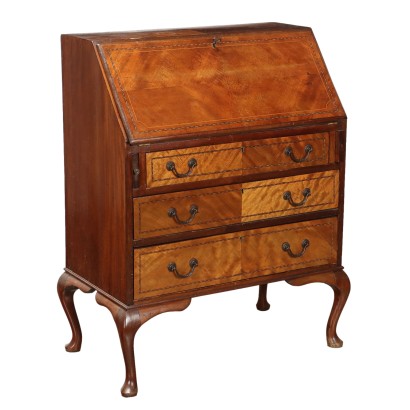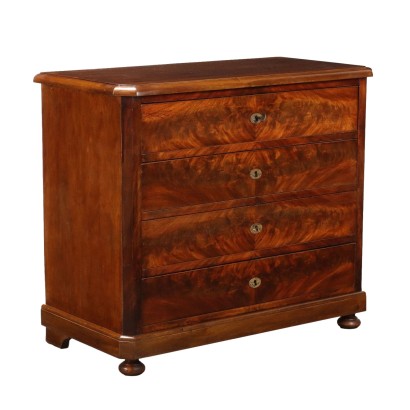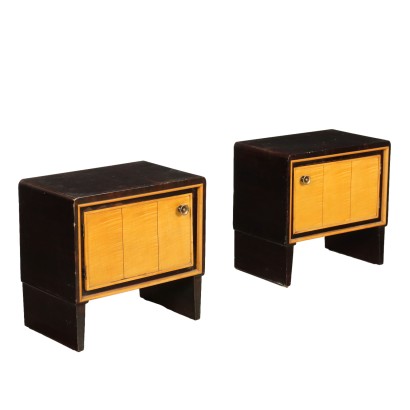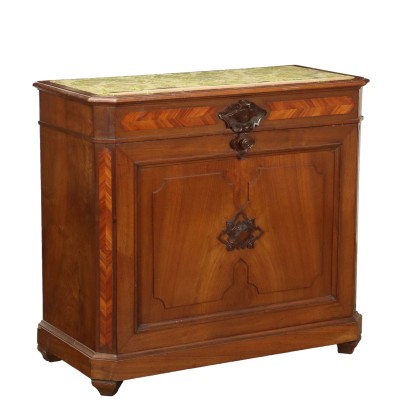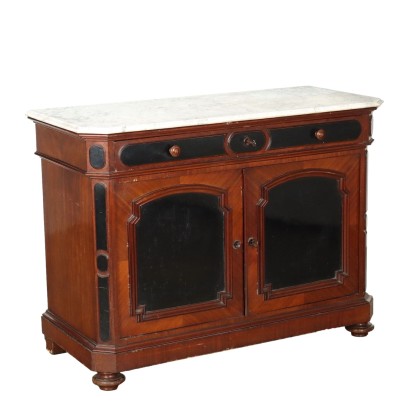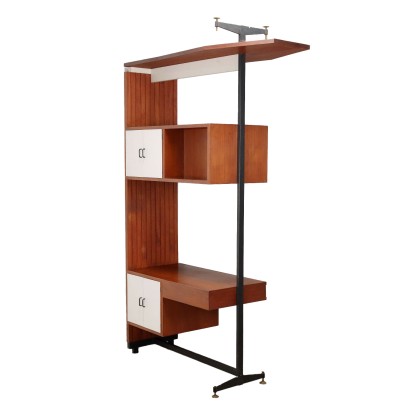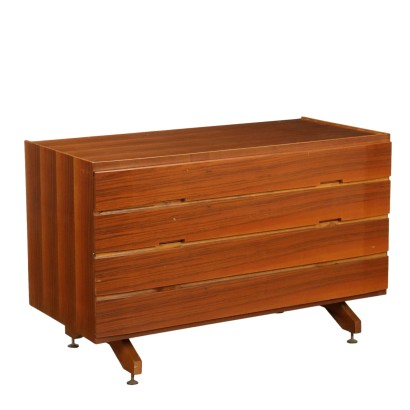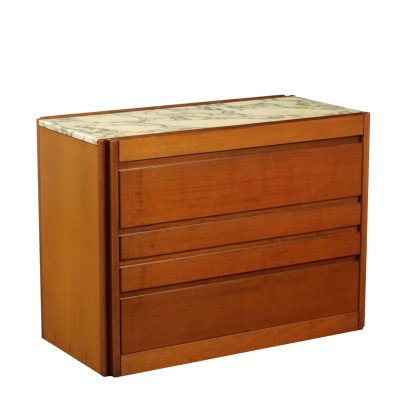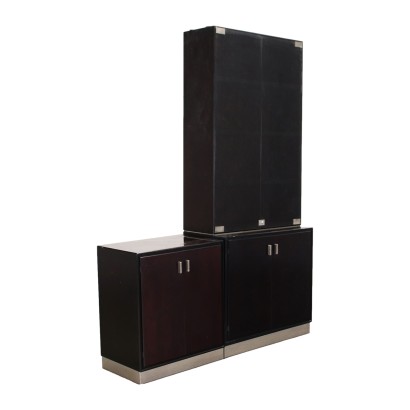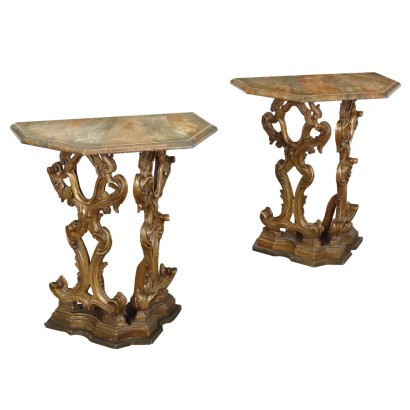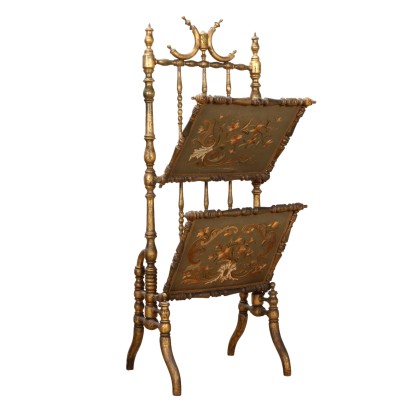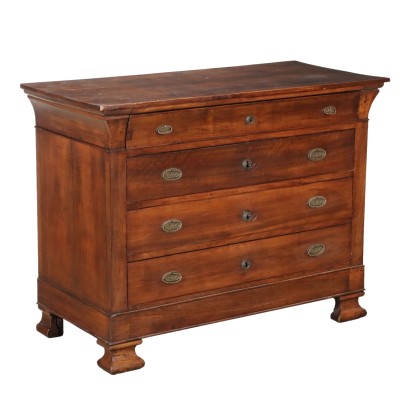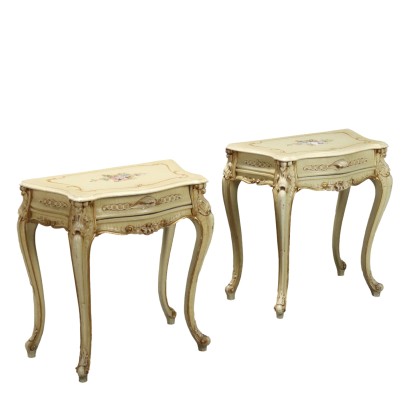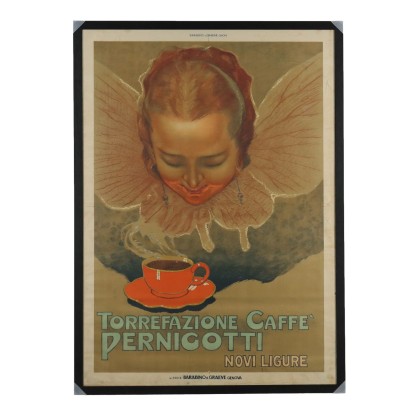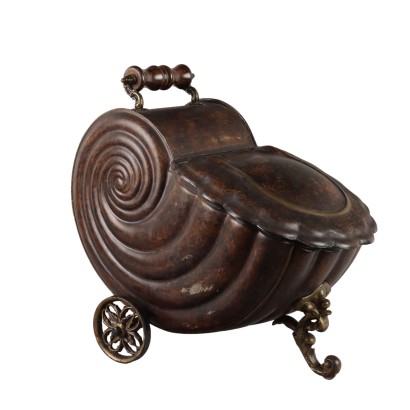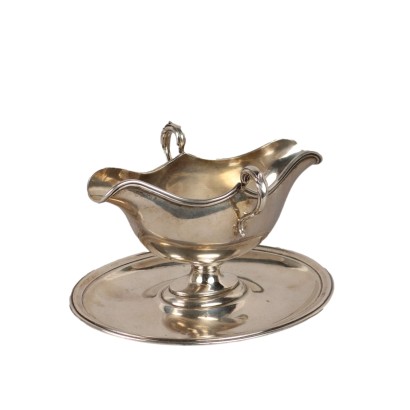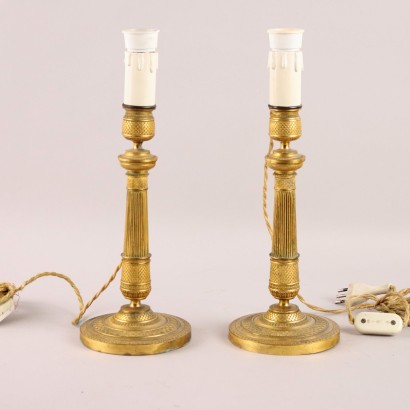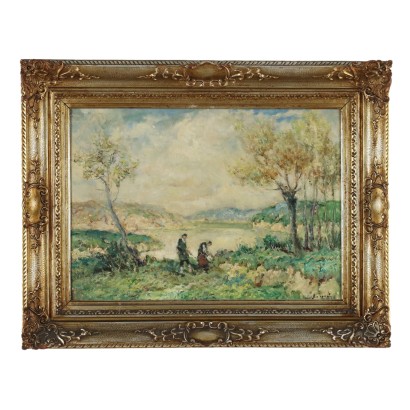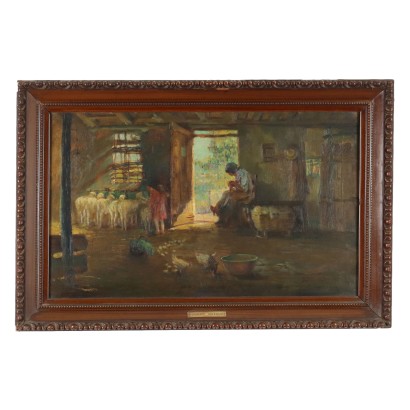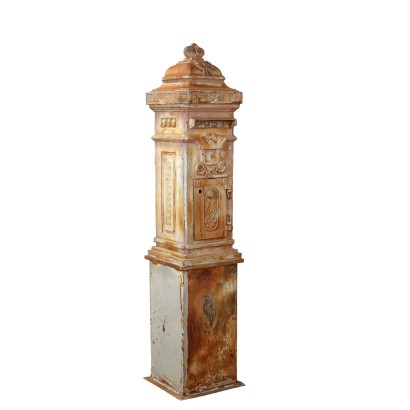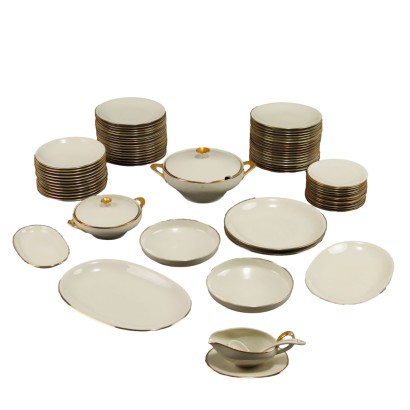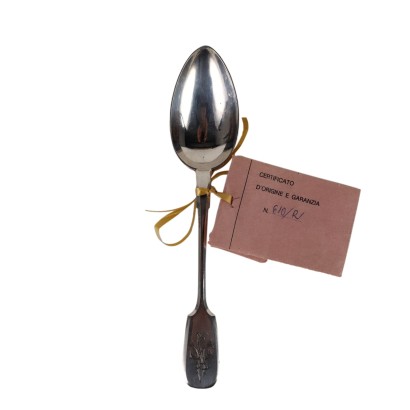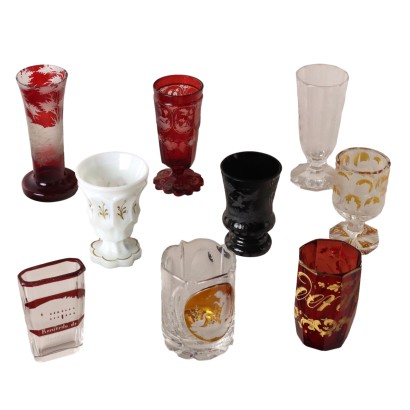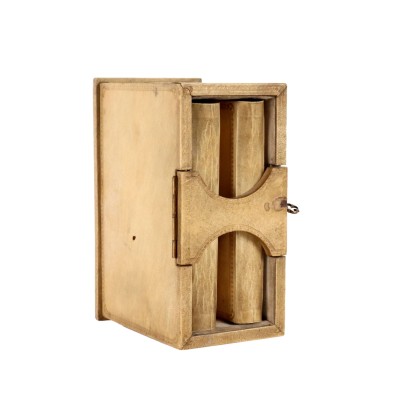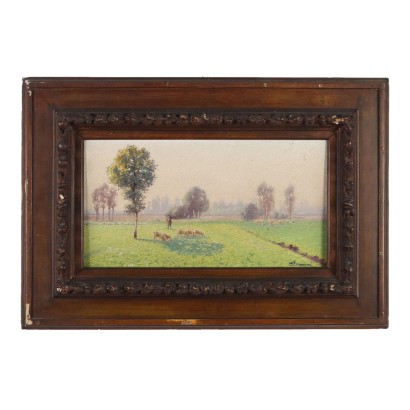Chippendale Style Desk - England Mid 20th Century
Features
England Mid 20th Century
Style: In the style of Chippendale
Age: 20th Century / 1901 - 2000
Origin: England
Main essence: Mahogany
Description
Chippendale style bureau from the mid-twentieth century. Veneered in quadripartite mahogany with maple fillets, oak interior. The slender bureau with four wavy legs presents three drawers and a drop-leaf door concealing a top covered in green morocco for easy writing and a cabinet with two drawers and letter holders.
Product Condition:
Product that due to age and wear may require restoration and polishing. We try to present the real condition of the furniture as completely as possible with the photos. If some details are not clear from the photos, what is reported in the description is valid.
Dimensions (cm):
Height: 99
Width: 80
Depth: 47
Additional Information
Style: In the style of Chippendale
Predominant style in English furniture in the second half of the eighteenth century.The Chippendale style is named after Thomas Chippendale, a famous English furniture manufacturer of the 1700s.
He began by designing Rococo-style furniture with the addition, from time to time, of oriental decorations and finally furniture with a neoclassical taste.
Its production concerns decidedly expensive and elaborate furniture but also common and, above all, cheap ones.
This style is, chronologically, followed by Art-Decò and Liberty.
Age: 20th Century / 1901 - 2000
20th Century / 1901 - 2000Main essence: Mahogany
It is one of the most precious and sought-after woods in cabinet making. It was discovered in Central America around 1600 and began to be imported to England in the 1700s. Much appreciated for its hardness and indestructibility, it became widespread following the blocking of walnut exports from France in 1720 and the consequent elimination of English import duties on mahogany from the colonies in America and India. The most valuable version comes from Cuba, but it became very expensive. At the end of the 18th century it began to be used also in France in Louis XVI, Directory and Empire furniture, its diffusion declined starting from when Napoleon, in 1810, forbade its import. It was generally used in the manufacture of elegant furniture, due to its characteristics and beautiful grain.Other customers have searched:
Dai un'occhiata anche ai nostri approfondimenti sul blog e alle presentazioni dei prodotti FineArt:
Leggi di più
Un cassettone a ribalta, espressione del gusto veronese di pieno SettecentoSecrétaire, il mobile con i nascondigli
Scrittoio a dorso d'asino, Piacenza, metà XVIII secolo
Cassettone a ribalta, Roma, secondo quarto XVIII secolo
Ribalta a urna, Milano metà XVIII secolo
Secrétaire, Bottega Francesco Maggiolini, primo quarto XIX secolo
Secrétaire, “Bottega dei fondi verdi”, inizi XIX secolo
Trumeau con anta a ribalta, Queen Anne, Inghilterra 1705 ca.
Sull'antiquariato in generale dai un'occhiata anche a:
Classic Monday: da un pezzo dei nostri magazzini alla storia dell'antiquariato
L'antiquariato dalla A alla Z: il Dizionario dell'Antiquariato
Il dizionario dell'antiquariato - Lastronatura
Il dizionario dell'antiquariato - Mascherone
Il dizionario dell'antiquariato - Natura morta
Il dizionario dell'antiquariato - Opificio
Il dizionario dell'antiquariato - Pastiglia
Il dizionario dell'antiquariato - Savonarola
Il dizionario dell'antiquariato - Rosone
Intaglio barocco con motivo a ricciolo
Product availability
The product can be seen at Cambiago
Immediate availability
Ready for delivery within 2 working days from ordering the product.

